🏔️ Sustainable Mountain Tourism in Nepal (2026/2027)
Preserving Peaks. Empowering People. Protecting the Future.
Nepal, the majestic rooftop of the world, has long been a haven for trekkers, climbers, and cultural explorers. But in the face of climate change, overtourism, and environmental degradation, the question today is not just how many visit—but how we visit.In 2026 and 2027, sustainable mountain tourism in Nepal is no longer a niche effort—it’s a nationwide movement. A shift toward responsible travel is transforming how visitors experience the Himalayas while ensuring that the benefits of tourism reach local communities and future generations.
🌱 What is Sustainable Mountain Tourism?
Sustainable mountain tourism goes beyond scenic treks and mountaineering feats. It involves:
- Conservation of fragile alpine ecosystems
- Support for local livelihoods
- Respect for indigenous cultures and sacred landscapes
- Minimizing environmental impact through eco-friendly practices
- Ensuring safety and well-being of porters, guides, and local staff
It’s about leaving the mountains better than we found them—culturally, ecologically, and economically.
🧭 Key Initiatives in Nepal (2026/2027)
1. Plastic-Free Trekking Zones
In 2026/2027, Nepal continues enforcing plastic bans in key trekking regions like Everest (Khumbu), Annapurna, and Manaslu. Visitors are encouraged to carry reusable bottles, avoid packaged goods, and use designated waste disposal areas along the trails.
♻️ Tip: Use metal water bottles with UV filters or fill up at safe refill stations supported by local cooperatives.
2. Community-Based Trekking Routes
To combat overtourism in popular areas, new routes are being developed in less-visited regions like:
- Mundum Trail (Khotang-Sankhuwasabha)
- Khaptad National Park
- Lower Dolpo & Humla Circuit
These trails offer immersive cultural experiences while spreading tourism income to remote villages.
🏡 Stay in homestays and community-run lodges to directly support local families.
3. Green Trekking Practices
Eco-conscious trekking companies are leading by example, using:
- Solar-powered accommodation and hot showers
- Biodegradable toiletries and eco-sanitation systems
- Local produce to minimize food transport and packaging
Travelers are also educated on Leave No Trace principles before starting their treks.
4. Ethical Guide and Porter Welfare
In 2026/2027, Nepal’s trekking regulations require that guides and porters be:
- Properly insured
- Paid fair wages
- Equipped with adequate clothing and gear
Hiring licensed, local staff from registered agencies is strongly encouraged.
💡 Choosing ethical agencies ensures safety for all and dignity for those who help carry your journey.
5. Permits That Fund Preservation
Entry fees and permits in regions like Sagarmatha, Annapurna, and Langtang now contribute directly to:
- Trail maintenance and infrastructure
- Forest conservation and wildlife monitoring
- Community development and education
These funds are reinvested into the regions to create a self-sustaining tourism model.
🌄 Benefits of Sustainable Mountain Tourism
✔️ Protects Nepal’s natural and cultural heritage
✔️ Reduces waste and carbon impact
✔️ Empowers local communities and marginalized groups
✔️ Improves safety and trekking experiences
✔️ Fosters meaningful travel and cultural understanding
🕊️ How You Can Be a Sustainable Traveler in Nepal
✅ Carry reusable water bottles and cloth bags
✅ Stay in eco-lodges or certified green homestays
✅ Use certified trekking agencies and hire local staff
✅ Avoid off-trail shortcuts to prevent erosion
✅ Don’t buy plastic-wrapped snacks for treks
✅ Learn about the culture before your visit
✅ Participate in trail clean-up or tree-planting events
✅ Travel slower—stay longer, connect deeper
🛕 Sacred Mountains, Sacred Responsibility
In Nepal, mountains are not just landscapes—they are living gods, ancestral guardians, and sources of life. Sustainable tourism honors this sacred relationship.
Whether you’re marveling at Ama Dablam, hiking to Tilicho Lake, or camping under the stars in Upper Mustang, remember: these places are sacred to the people who live there.
Traveling respectfully is the greatest offering you can make.
As Nepal steps into a future shaped by climate resilience and conscious travel, your choices matter more than ever. In 2026 and 2027, sustainable mountain tourism is not a sacrifice of comfort—it is an upgrade in awareness.You’re not just a visitor.
You’re a steward.
You’re part of the story.
Share this content:
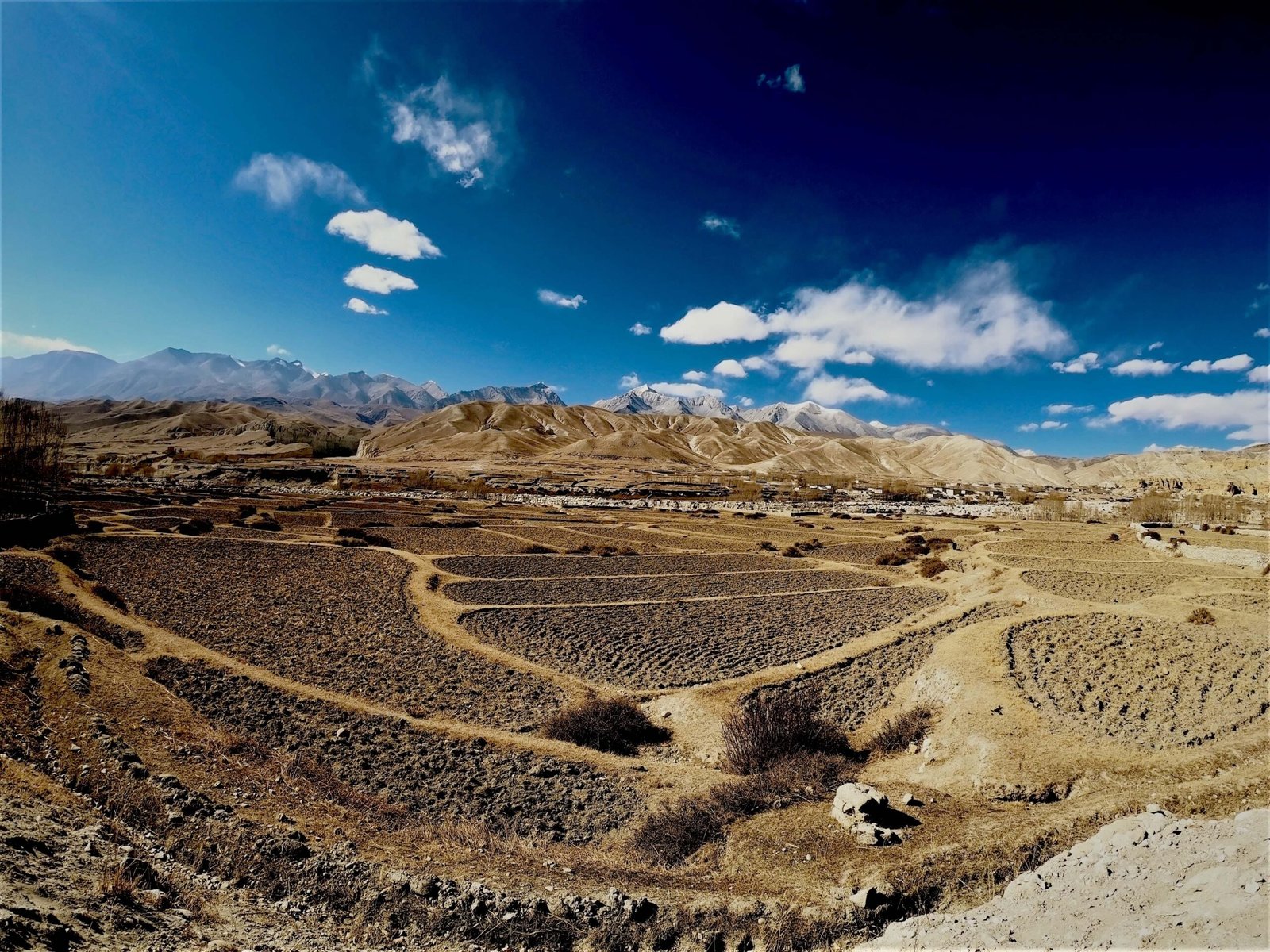

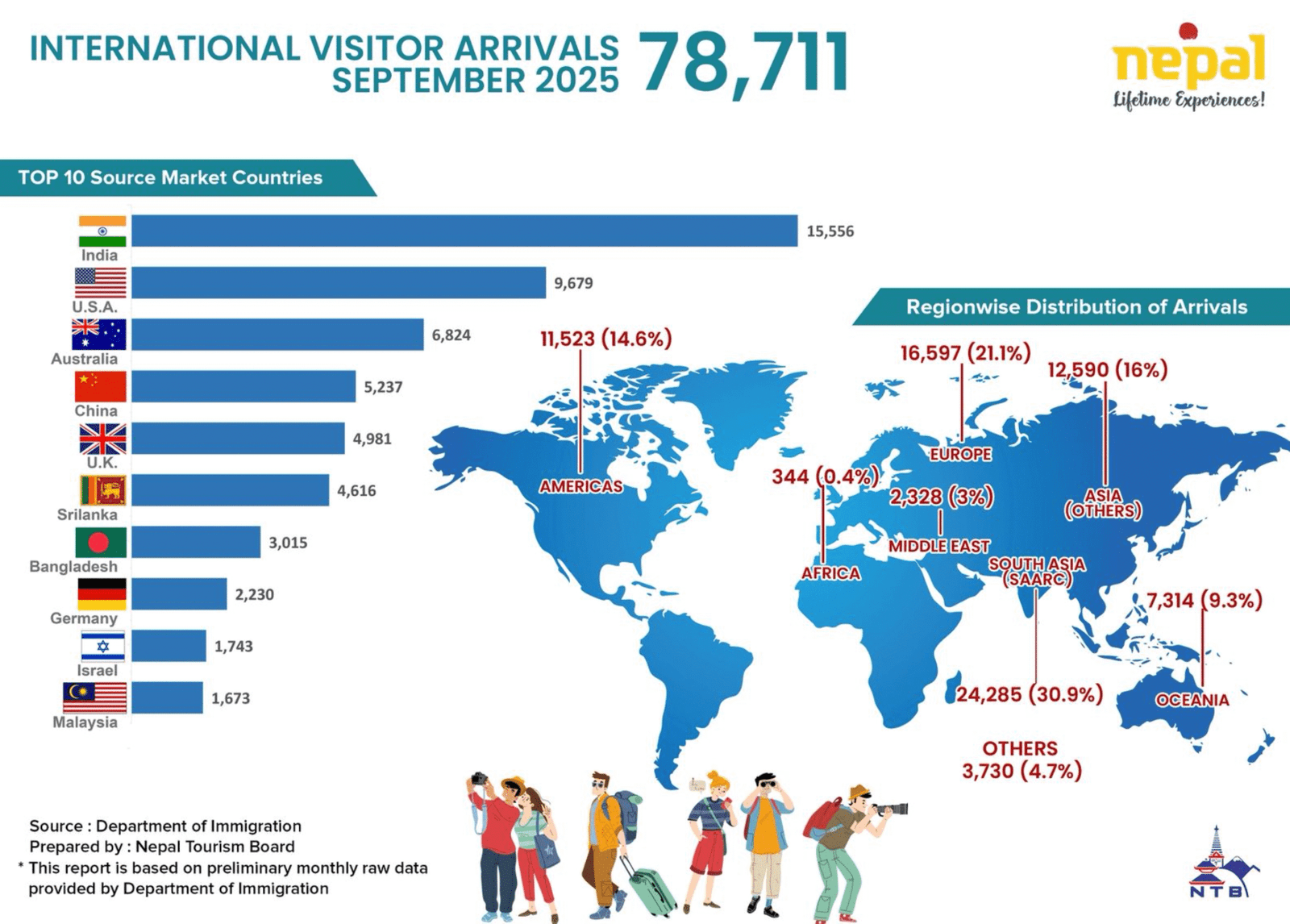

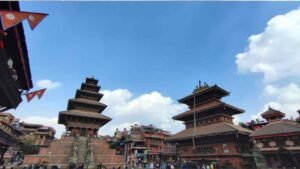

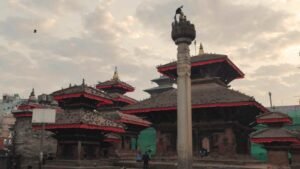

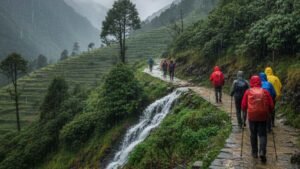

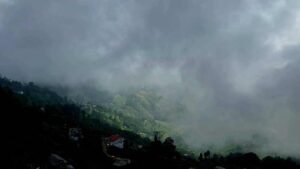

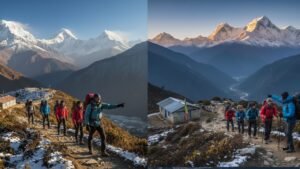

1 comment